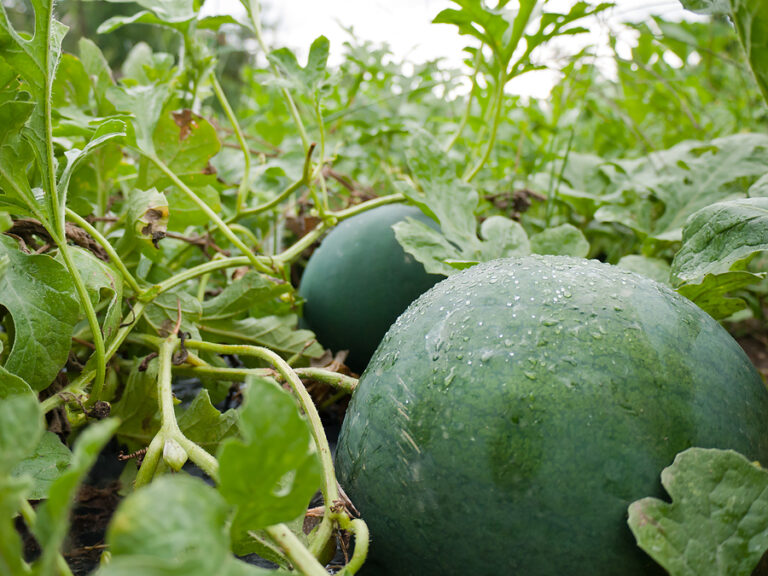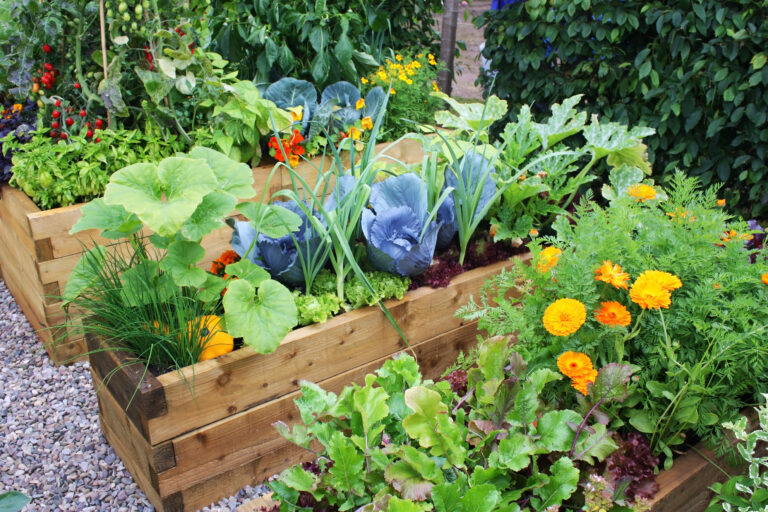Growing Polycultures in the Vegetable Garden
What Are Polycultures in the Garden?
A polyculture is a planting system where multiple crop species grow together in the same space, mimicking the diversity found in natural ecosystems. Unlike monocultures, which grow a single crop in large blocks, polycultures combine complementary plants—vegetables, herbs, and flowers—to create healthier, more resilient gardens. Polycultures take advantage of natural relationships between plants, soil microbes, and beneficial insects, supporting productivity while reducing the need for synthetic inputs.
Why Grow Polycultures?
- Pest and disease reduction – Diverse plantings confuse pests and attract predators.
- Improved soil health – Different root depths and nutrient needs prevent depletion and improve structure.
- Efficient use of space – Shallow and deep-rooted crops share beds without competing.
- Extended harvests – Succession planting and companion crops allow for continuous yield.
- Resilience – A diverse garden is less vulnerable to extreme weather or crop loss.
How to Plan Polycultures
1. Choose Complementary Plants
- Mix nitrogen-fixers (beans) with heavy feeders (corn, tomatoes).
- Combine deep-rooted plants (carrots) with shallow-rooted ones (lettuce).
- Include herbs and flowers (basil, marigold) to attract pollinators and repel pests.
2. Use Spatial Strategies
- Interplant tall and short crops to optimize sunlight.
- Plant fast-growing crops alongside slower growers for continuous space use.
- Mix leaf textures and colors for visual and ecological diversity.
3. Consider Seasonal Dynamics
- Rotate crops to reduce disease and nutrient depletion.
- Combine warm-season and cool-season crops where climate allows.
Examples of Polyculture Combinations
- Tomatoes + Basil + Borage + Lettuce – Supports pollinators, repels pests, shades soil.
- Corn + Beans + Squash (Three Sisters) – Beans fix nitrogen; squash shades soil; corn supports beans.
- Carrots + Onions + Radishes – Confuses pests, uses vertical and horizontal space efficiently.
- Kale + Dill + Nasturtium – Attracts beneficial insects and provides diverse harvests.
Tips for Success
- Start small and observe plant interactions.
- Maintain diversity, but avoid overcrowding.
- Feed soil regularly with compost and organic matter.
- Monitor for pests; polycultures reduce pressure but don’t eliminate it entirely.
Final Thoughts
Polycultures transform a vegetable garden into a living ecosystem. By embracing diversity, you create a productive, resilient garden that nurtures plants, soil, and beneficial insects. Polycultures allow gardeners to grow more while working in harmony with nature, reducing inputs, and supporting long-term sustainability.
Polyculture Companion Chart for Vegetable Gardens
| Vegetable | Polyculture Partners | Notes / Benefits |
|---|---|---|
| Tomatoes | Basil, Lettuce, Borage | Repels pests, attracts pollinators, shades soil for slower-growing greens |
| Peppers | Basil, Onions, Marigold | Repels aphids, boosts flavor, attracts beneficial insects |
| Cucumbers | Nasturtium, Dill, Radish | Trap crop for beetles, attracts pollinators, breaks pest cycles |
| Zucchini/Summer Squash | Corn, Nasturtium, Borage | Provides shade, attracts pollinators, repels squash bugs |
| Lettuce | Carrots, Radish, Strawberries | Mixes shallow and deep roots, groundcover, shade for soil |
| Carrots | Onions, Chives, Lettuce | Confuses pests, optimizes root zones, companion harvest timing |
| Beans (Bush/Pole) | Corn, Squash, Marigold | Nitrogen fixer, provides structure/support, repels pests |
| Basil | Tomatoes, Peppers, Oregano | Enhances flavor, pest deterrent, aromatic guild |
| Onions | Beets, Lettuce, Cabbage | Repels pests, improves flavor, efficient root usage |
| Garlic | Tomatoes, Roses, Peppers | Repels nematodes/pests, antifungal, promotes plant resilience |
| Kale | Dill, Celery, Nasturtium | Attracts beneficial insects, confuses pests, microclimate buffer |
| Broccoli | Celery, Chamomile, Beets | Repels cabbage pests, improves flavor, efficient nutrient use |
| Potatoes | Beans, Cabbage, Marigold | Nitrogen support, pest deterrent, reduces soil nematodes |
| Spinach | Radish, Peas, Strawberries | Nitrogen support, groundcover, shade for small plants |
| Beets | Onions, Lettuce, Mustard Greens | Pest deterrence, soil nutrient balance, complementary root structure |
Tips for Using This Chart
- Plant in small guilds rather than large monoculture blocks.
- Mix root depths and growth habits—shallow, deep, climbing—to maximize space.
- Include flowers or herbs to attract pollinators and beneficial insects.
- Rotate polycultures annually to maintain soil health and reduce disease pressure.





